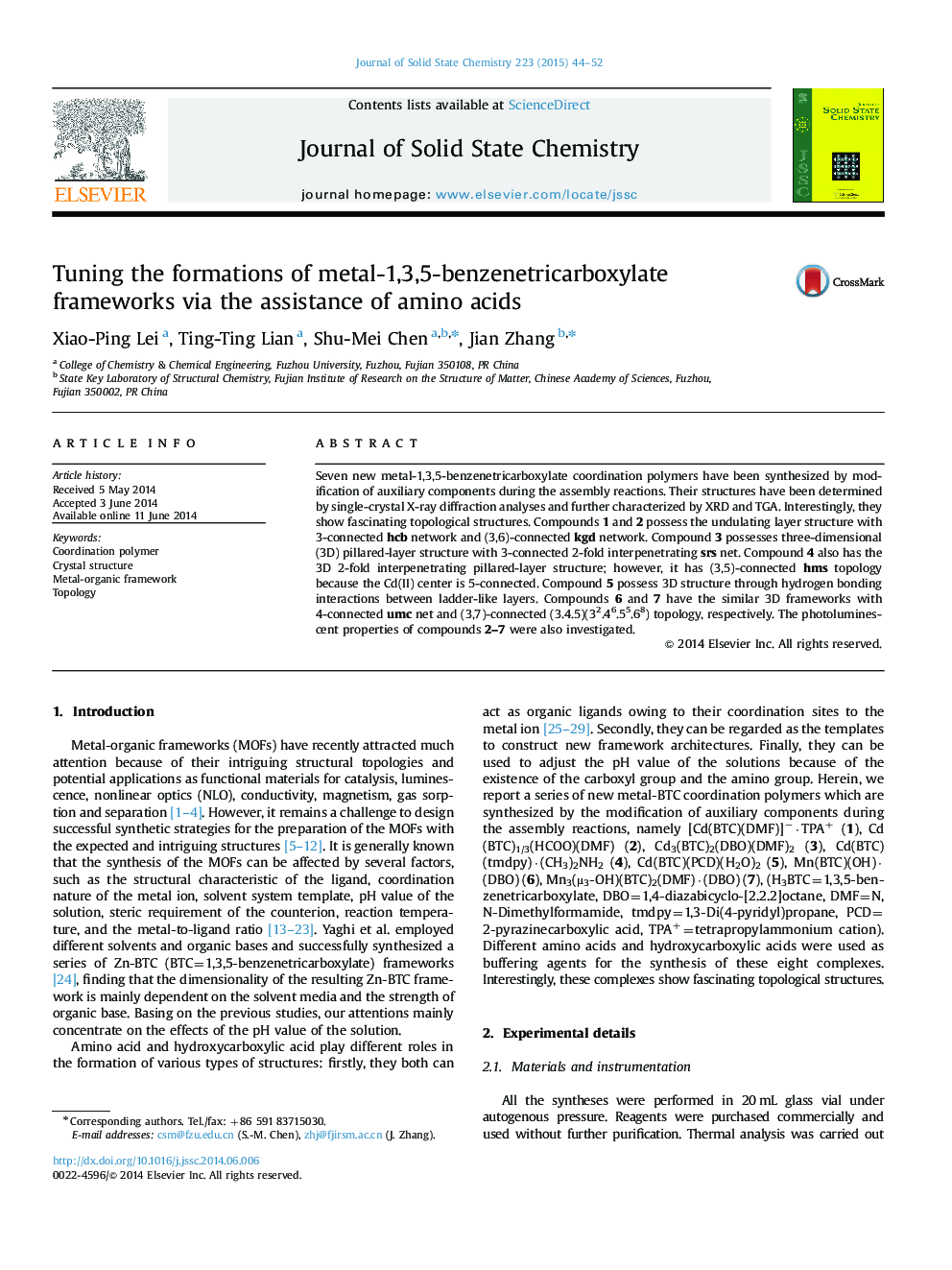| Article ID | Journal | Published Year | Pages | File Type |
|---|---|---|---|---|
| 1328983 | Journal of Solid State Chemistry | 2015 | 9 Pages |
•Structural diversity of metal-1,3,5-benzenetricarboxylate frameworks.•Tuning structural topologies of MOFs via the assistance of amino acids.•Amino acids as unusual buffering agents for the synthesis of MOFs.
Seven new metal-1,3,5-benzenetricarboxylate coordination polymers have been synthesized by modification of auxiliary components during the assembly reactions. Their structures have been determined by single-crystal X-ray diffraction analyses and further characterized by XRD and TGA. Interestingly, they show fascinating topological structures. Compounds 1 and 2 possess the undulating layer structure with 3-connected hcb network and (3,6)-connected kgd network. Compound 3 possesses three-dimensional (3D) pillared-layer structure with 3-connected 2-fold interpenetrating srs net. Compound 4 also has the 3D 2-fold interpenetrating pillared-layer structure; however, it has (3,5)-connected hms topology because the Cd(II) center is 5-connected. Compound 5 possess 3D structure through hydrogen bonding interactions between ladder-like layers. Compounds 6 and 7 have the similar 3D frameworks with 4-connected umc net and (3,7)-connected (3.4.5)(32.46.55.68) topology, respectively. The photoluminescent properties of compounds 2–7 were also investigated.
Graphical abstractPresented here are seven new metal-1,3,5-benzenetricarboxylate coordination polymers with diverse structures from 2D layers to 3D open frameworks. The synthesis and structural diversity of these compounds are determined by the additional amino acids as unusual buffering agents.Figure optionsDownload full-size imageDownload as PowerPoint slide
